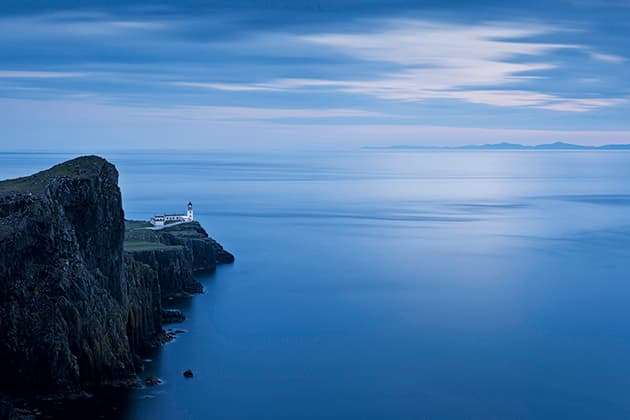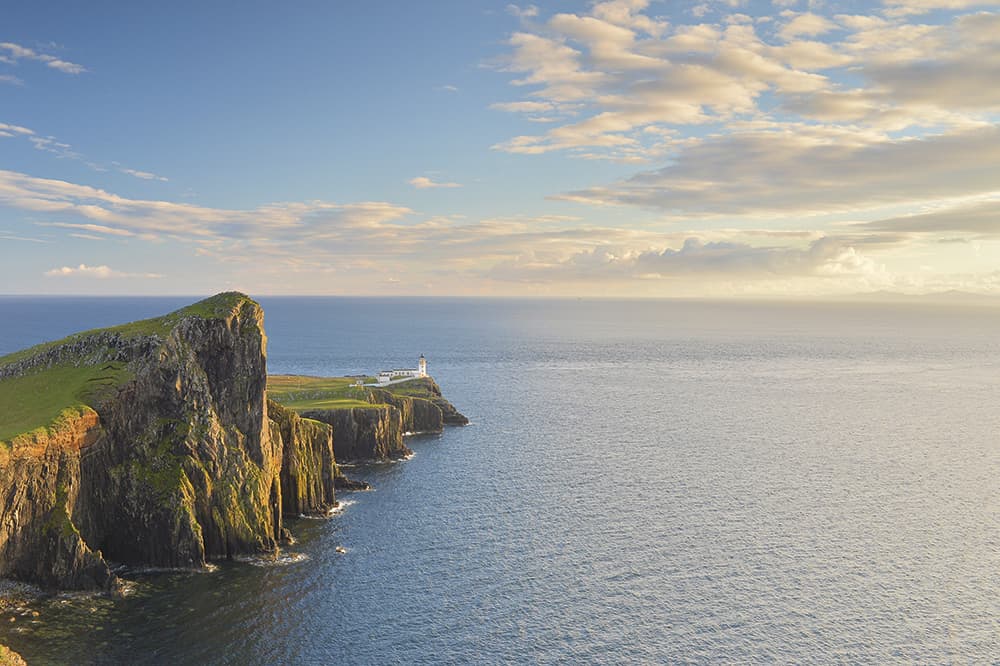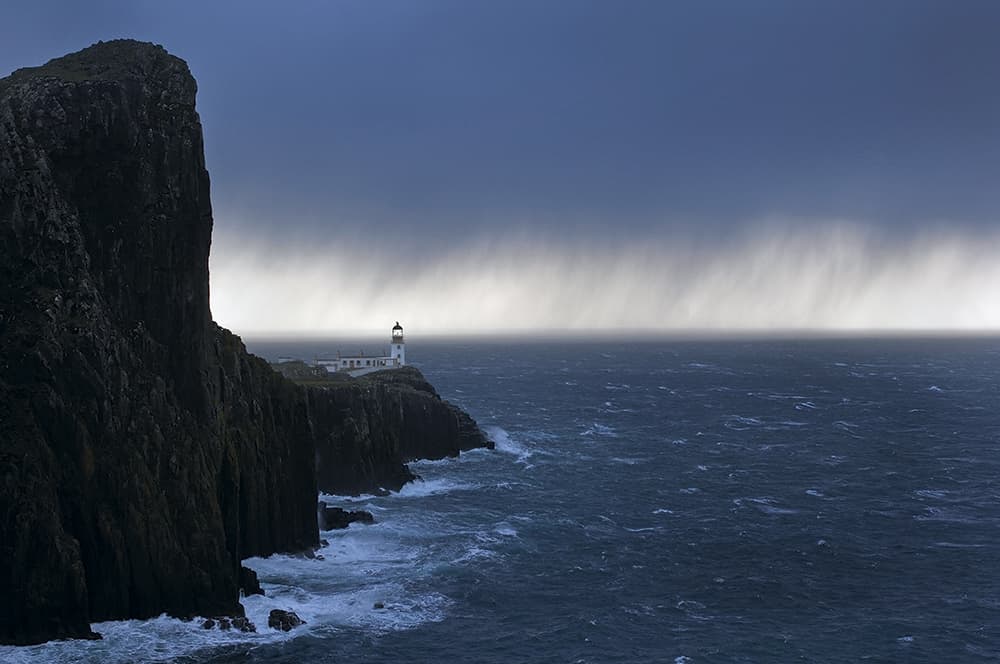
Make sure you stay until after sunset to capture the lighthouse at dusk. All photos by Jeremy Walker
Neist Point lighthouse is dramatically perched on the sea cliffs at the most westerly point of the Isle of Skye and is about five miles from the small hamlet of Glendale, or about an hour from the island’s capital of Portree. Access is relatively easy and the lighthouse is well signposted, although the roads become more and more narrow and twisty the nearer to the lighthouse you get.
There is a very small car park about half a mile away from the lighthouse, but parking is possible by the side of the road on the grass verges, although the area gets very busy during the summer months. Be warned that there are no facilities at Neist Point, so be prepared and take your own food and refreshments with you.
The main attraction at Neist Point for landscape photographers is, of course, the lighthouse. Although it is not the biggest or most dramatic lighthouse in the UK, the location and its setting are absolutely stunning. There are many photographic options – from walking just a few hundred yards from the car park along the cliff tops and looking down and along to the lighthouse, to taking a short hike down to the lower level and getting nearer to the lighthouse.
A word of warning, though – the cliffs are steep, the ground uneven underfoot and there are no fences to stop you going over the edge. Take extreme care.
Shooting advice
Time to visit
Neist Point is a good all-year-round location. If you shoot the lighthouse in the middle of summer, the sunset is in the northwest and the cliffs are nicely side-lit. Summer shooting will also give you near 24-hour daylight and long periods of dawn and dusk with a great quality to the light. Visiting in the winter will probably see you shooting into the sunset with the lighthouse back-lit for a completely different look.
A circular polarising filter and a few neutral density graduated filters will also be invaluable for controlling the exposure of the sky – this is a ‘big-sky’ location.
Although the lighthouse is in a remote and rugged setting, with the Outer Hebrides in the far distance, it is a huge draw for photographers. Neist Point is also a great place for watching and potentially photographing wildlife. As well as the usual mixture of sea birds such as gannets, razorbills and shags, whales, dolphins, porpoises and basking sharks can all be seen from the cliffs from late April through to the end of the summer, with June and July being the best months.
Food and lodging
There were no facilities at Neist Point at the time of writing, although there are plans to open a shop next to the car park. The nearest settlement is Glendale, where there is the fantastic Red Roof Café and Gallery. The food is excellent, the service friendly and there are some great artworks on the walls. There are a few B&Bs dotted around, but for accommodation and food of the highest calibre try The Three Chimneys restaurant at Colbost.
Kit
Lenses
If you are contemplating shooting the lighthouse, both a 24-70mm zoom and the longer 70-200mm zoom will be ideal.
Clothing
As with many locations, this is a landscape that is exposed to the elements and you will need windproof, waterproof clothing, a hat and gloves. Do not be lulled into a false sense of security as Atlantic storms can catch you unawares.
Butane cooker
A small single-ring butane cooker is a really useful non-photographic piece of kit, which I have found to be really useful for this type of location over the years. It means you can at least cook a bacon butty or boil a kettle if the
nearest café is a long way away.
Jeremy is an award-winning professional photographer with many years’ experience specialising in high-quality landscape and location photography from around the world for use by advertising, design and corporate clients. Jeremy is also a Nikon Ambassador. www.jeremywalker.co.uk









